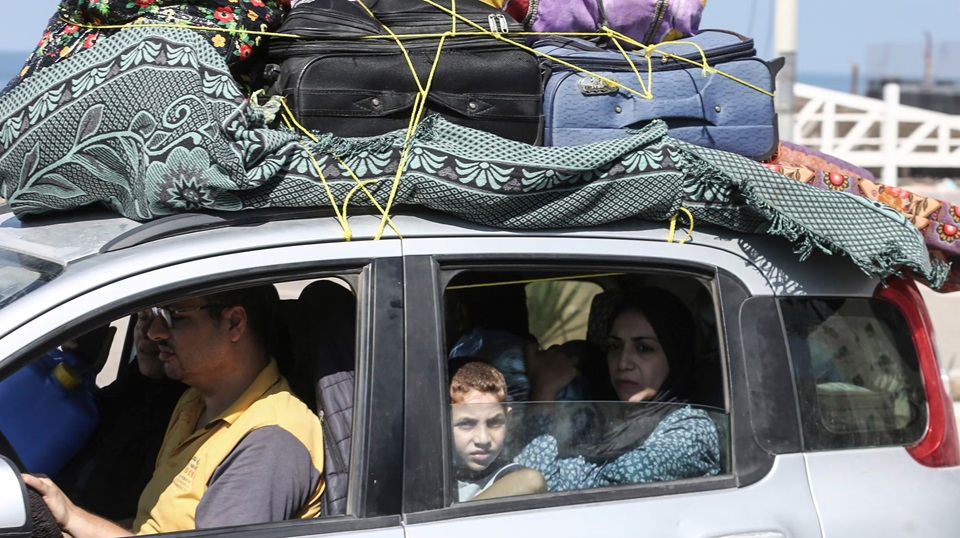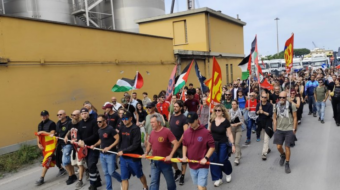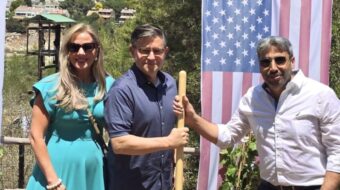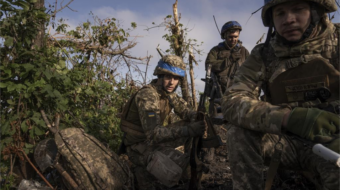
The humanitarian disaster of war in Gaza shows in both the wreckage of hospitals and the dying in and around hospitals. The need, said Dr. Hammam Alloh, an internist, is, “First, we need this war to end, because we are real humans … We have the right to live freely.”
Healthcare workers at Al-Shifa hospital buried over 180 dead patients. Norwegian physician Mads Gilbert reported that, “Twenty out of the 23 ICU patients had died. Seventeen other patients died because of lack of supplies, oxygen and water. And three, if not five, of the 38 premature newborns have died because of this slow suffocation.”
Asked why he remains at Al-Shifa Hospital, despite the invaders’ orders to leave, Dr. Alloh explained that he didn’t choose to be a physician “to think only about my life and not my patients.” And, “Who treats my patients? We are not animals. We have the right to receive proper healthcare.” Alloh subsequently died from a bomb attack on his living quarters.
Expressions of outrage have circulated widely in the independent media. World Health Organization head Tedros Adhanom Ghebreyesus told the UN General Assembly that, “You must act and you must act now … there are no words to describe the horror.”
The plight of Dr. Shadi Issam Radi is appalling. He is standing in a corridor of the hospital during his interview. Two little children are at his side. “I have worked in the intensive care department for seven years,” he says. “My wife was killed while I was working. I am obliged to bring the children with me. I am still working. Thank God for everything.”
Condemnations and revulsion are not enough. Fixation on the dire situation of the Gaza doctors contributes little to ending the war, just as treating the symptoms of sick people doesn’t cure them. But knowing about cause helps to achieve peace and to find curative treatments.
The plan here is to go scientific, to investigate a historical reality that, having fostered relations mired in lethal conflict, may someday, through struggle, usher in more promising realities.
The Palestinian people’s circumstances for living and for communal existence have long been unsustainable. Political prisoner Mumia Abu-Jamal recently explained why that is so:
“[W]ar between Palestine and Israel … is not a war around religion or between faiths or gods. It’s a war for that which is no longer being produced — land … The Palestinians are the Indigenous people of the region. They are thus equivalent to the Navajo, Apache and Seminoles of the West.”
Israeli military leader Moshe Dayan in 1956 spoke about land and the fight for land:
“What can we say against [the Palestinians’] terrible hatred of us? For eight years now, they have sat in the refugee camps of Gaza and have watched how, before their very eyes, we have turned their land and villages, where they and their forefathers previously dwelled, into our home … Without the steel helmet and the cannon’s maw, we will not be able to plant a tree and build a home.”
Immigrants who came to build a Jewish state began to arrive in Palestine in the earliest years of the 20th century, mostly from Europe. A burgeoning population needed land for sustenance, land with its topsoil, vegetation, crops, trees, space for living, and access to water in rivers, springs, and aquifers.
Israeli historian Ilan Pappé estimates that during the 400-year period of Ottoman rule, from 1517 on, Jewish people made up only two to five percent of the region’s population. A census in 1878 showed that 87% of inhabitants were Muslim, 10% Christian, and 3% Jewish.
Supporters of the Israeli occupation of Palestinian land have portrayed pre-immigration Palestine as a “desert,” empty of people. However, Pappé indicates that in the 18th century, “[T]he coastal network of ports and towns boomed through its trade connections with Europe, while the inner plains traded inland with nearby regions.” Palestine “was part of a rich and fertile eastern Mediterranean world that in the 19th century underwent processes of modernization and nationalization. It … was a pastoral country on the verge of entering the 20th century as a modern society.”
Huge numbers of immigrants
He adds that, “By 1945 more than half a million new settlers came to a country whose population was about 2 million …The settlers’ only way of expanding their hold on the land…and of ensuring an exclusive demographic majority was to remove the natives from their homeland.”
Antisemitism in Europe and elsewhere stimulated emigration to Palestine, more so after the Holocaust and Israel’s formation. That government in 1950 instituted its Law of Return which grants “every Jew in the world” the right to settle in Israel.”
British rule over Palestine from 1920 to 1948, under a League of Nations “Mandate,” fit with imperialist ambitions, according to Pappé. The United States and France would be joining Britain in a joint venture with the new Israeli state to control the region and assure access to oil and gas. Likely expectations were that Israel would become powerful and its population would grow. Absorption of Palestinian land was part of the package.
In 1945, 84.7% of cultivatable land in Palestine was “Arab-owned.” The “newly established Israeli [military] forces in 1948 launched a major offensive” after Israel declared its independent statehood and after the surrounding Arab nations attacked. This was the setting for the “Nakba” (catastrophe); hundreds of thousands of Palestinians were forcibly displaced from homes and land.
According to one report (Journal of Palestine Studies, 1979), “Israel thus began its life with a vast stock of abandoned farmland and in the early years of statehood, when immigrants were pouring in, this land was ‘reclaimed’ for agriculture at an impressive rate. In the four-year period from 1948-49 to 1952-53, the physical area under cultivation in Israel almost doubled.”
Moreover, “About 80 percent, and probably more, of the 2,185,000 dunums (539,925 acres) brought into cultivation since 1948 thus constitutes farmland belonging to the Palestinian refugees.”
A study appearing in the year 2000 reports on the shrinking of agricultural acreage due to Israeli occupations: “The loss of large stretches of agricultural land, after 1967, due to land confiscation and closures, and limitations on water supply and product markets, has led to a substantial decline in the production of this sector.”
Ultimately, the reality of reduced access to land has left Palestinians with precarious living conditions and has forced them into a toxic relationship with Israel. An accompanying reality is that the international community’s arrangements for the partition of Palestine in 1947, and for enforcement, were flawed.
Other troublesome real-life phenomena include: competing Palestinian claims to oil and gas deposits off-shore and in the West Bank, and the continuous, death-dealing supply of U.S. weaponry to Israel.
Meanwhile, appeals to international law, moral principles, human rights, and common decency don’t move the mountain. The conflict continues. Personal or collective grief at the suffering and deaths of the Gaza doctors and their patients has little impact.
We hope you appreciated this article. At People’s World, we believe news and information should be free and accessible to all, but we need your help. Our journalism is free of corporate influence and paywalls because we are totally reader-supported. Only you, our readers and supporters, make this possible. If you enjoy reading People’s World and the stories we bring you, please support our work by donating or becoming a monthly sustainer today. Thank you!










